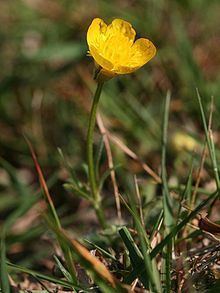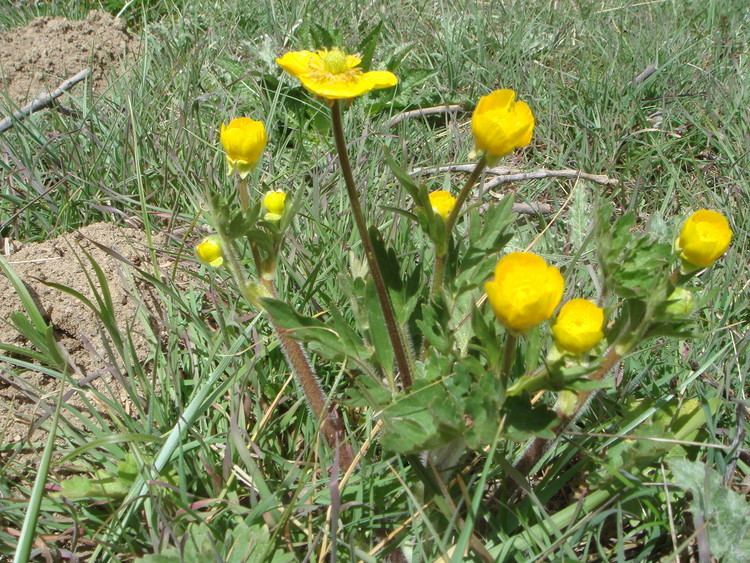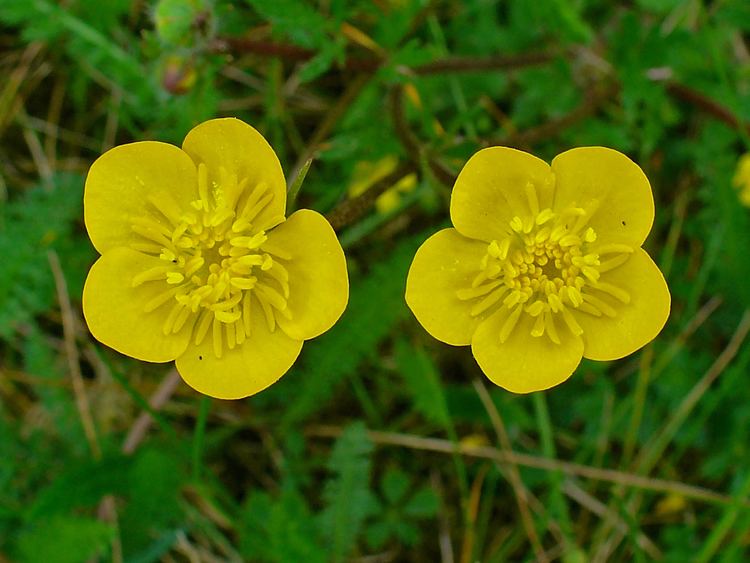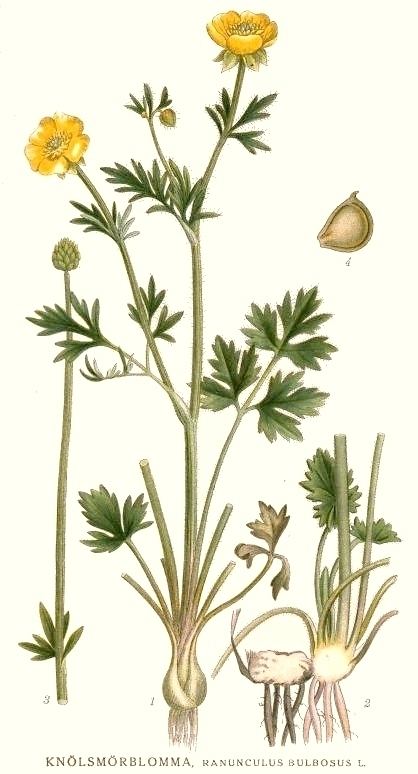Rank Species | Genus Ranunculus Higher classification Buttercup | |
 | ||
Similar Buttercup, Ranunculus repens, Meadow buttercup, Ranunculus flammula, Ranunculus sceleratus | ||
Ranunculus bulbosus, commonly known as St. Anthony's turnip or bulbous buttercup, is a perennial member of the buttercup family. It has attractive yellow flowers, and deeply divided, three-lobed long-petioled basal leaves. Bulbous buttercup is known to form tufts.
Contents

Growth

The stems are 20–60 cm tall, erect, branching, and slightly hairy flowering. There are alternate and sessile leaves on the stem. The flower forms at the apex of the stems, and is shiny and yellow with 5–7 petals. The flowers are 1.5–3 cm wide. The plant blooms from April to July.
Etymology

The bulbous buttercup gets its name from its distinctive perennating organ, a bulb-like swollen underground stem or corm, which is situated just below the soil surface. After the plant dies in heat of summer, the corm survives underground through the winter. Although the presence of a corm distinguishes Ranunculus bulbosus from some other species of buttercup such as Ranunculus acris, the species also has distinctive reflexed sepals.

Other names for the bulbous buttercup are "Goldcup" because of the colour and shape of the leaves, and "Frogs-foot" from their form.
Distribution

Bulbous buttercup grows in lawns, pastures and fields in general, preferring nutrient-poor, well-drained soils. Although it doesn't generally grow in proper crops or improved grassland, it is often found in hay fields and in coastal grassland. The native range of Ranunculus bulbosus is Western Europe between about 60°N and the Northern Mediterranean coast. It grows in both the eastern and western parts of North America as an introduced weed.
Chemical constituents

This plant, like other buttercups, contains the toxic glycoside ranunculin. It is avoided by livestock when fresh, but when the plant dries the toxin is lost, so hay containing the plant is safe for animal consumption.
